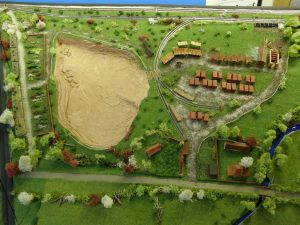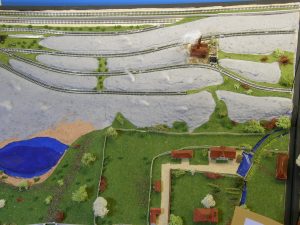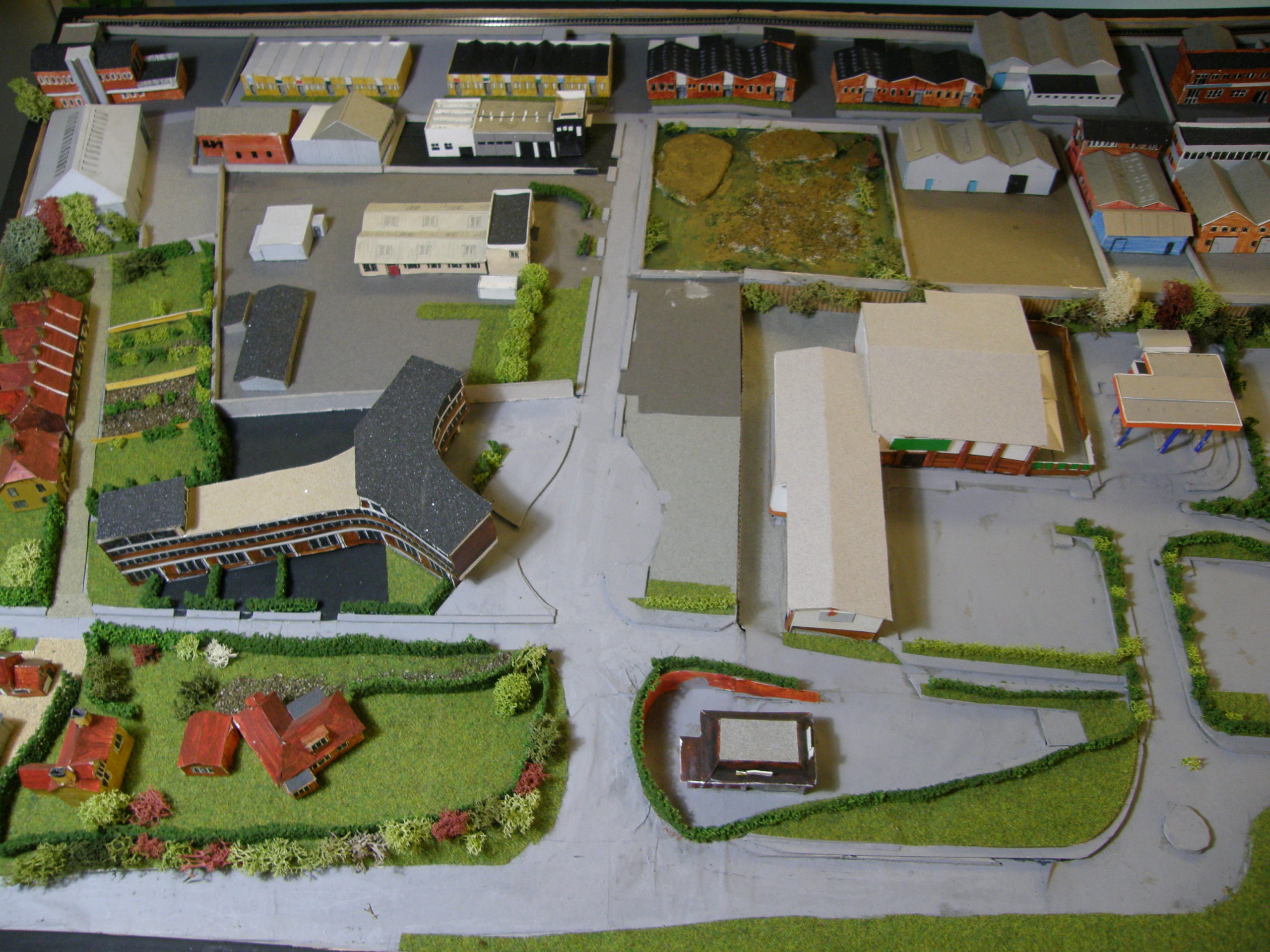Three scale models of the development of Ladd’s Field (Otford) from brick field to rubbish dump and then to the Vestry industrial estate.
The Vestry Estate that we know today owes its existence to the geology of the land beneath it.
In the late 1820s William Norman started a small brick-making operation on the Sevenoaks to Otford Road where a layer of gault clay was found near the surface. This small brickfield grew and by the early 1860s was taken over by Thomas Russell Crampton and call Holland Hill Brickfield.
The railway from London to Sevenoaks arrived beside the site in 1862 and by 1869 a siding was constructed and the works became known as St John’s Brickyard.
Following Thomas Crampton’s death in 1888 all 81 acres of the land was sold to the Sevenoaks Estate Company. This land, including an enormous pit from which the clay had been extracted was bought in April 1891 by the Vestry of Newington (Southwark) as a depot and tip for rubbish from this area of London. At this time it was estimated that it would take 20 years to fill the clay pit but, in fact, they dumped here until the late 1930s.
The Vestry built cottage for the workers and improved the facilities at the depot in the 1890s. Just before the outbreak of the Second World War the rubbish dumping operation ceased and along with it the noise and smell of the tip.
Over the next 20 years the site lay unused and grassed over until, in 1956, applications were received for permission to build factories at ‘The Vestry.’ Consent was given to build four units that were to form the nucleus of the future Vestry Estate.
During the 1960s more low-rise units appeared on different areas of the land. One of the last areas to be built on was were the furnace once stood where there was a hole in the ground known as the ‘dead’ dog.’
During this time the hobby of digging down into the rubbish for Victorian bottles became common the site. If you ravelled on the train from Bat and Ball to Otford it was possible to see many deep holes made in the ash by the diggers in their attempts to find their ‘hidden treasures.’
One building of note on the estate is Beckett House which was completed in 1969. This striking office block in the shape of a ‘lazy Y’ was occupied by Mobil Data Services. The A-Z Map Company also had a large building at the top corner of the site. The estate we know today still retains some of those original buildings. Others have been torn down and replaced by larger units requiring piles to be driven deep into the rubbish to ensure good foundations.
No doubt, as time goes by, the Estate will change further but it is good to think back to those days long ago when a few men dug in a base field and found clay.


Item Features
| Object Number | L-100321-05 |
| Number of objects | 3 |
| Alternative marking | None |
| Significance to the collection | Highly significant. Relates to the history of the Darent Valley |
| Marks | None |
| Completeness | Complete |
| Maker | Rod Shelton |
| Place of Manufacture | Otford |
| Significance to the Collection | Highly significant. Relates to the history of the Darent Valley |
| Condition of Holding | Loan |
| Object Owner | Rod Shelton |
| See also: | Model |
